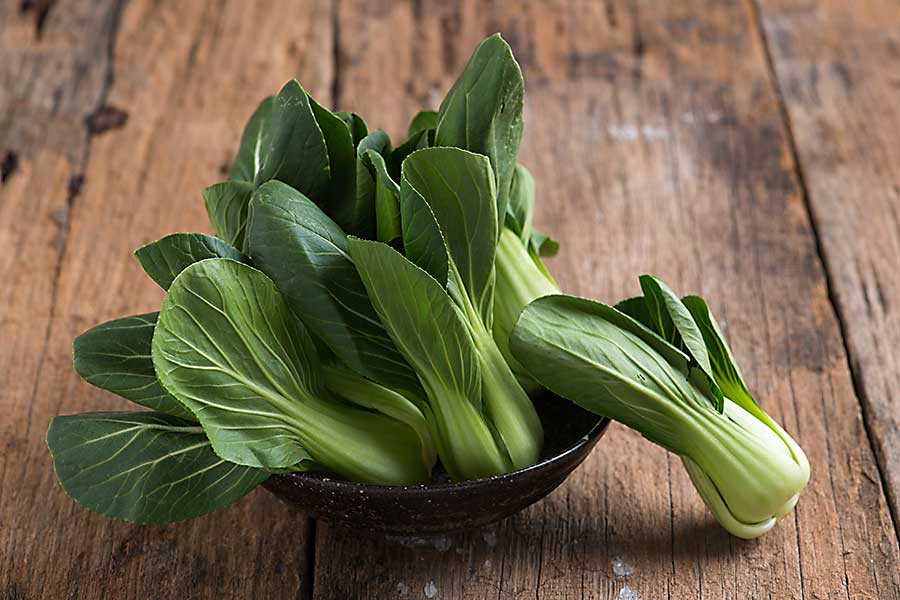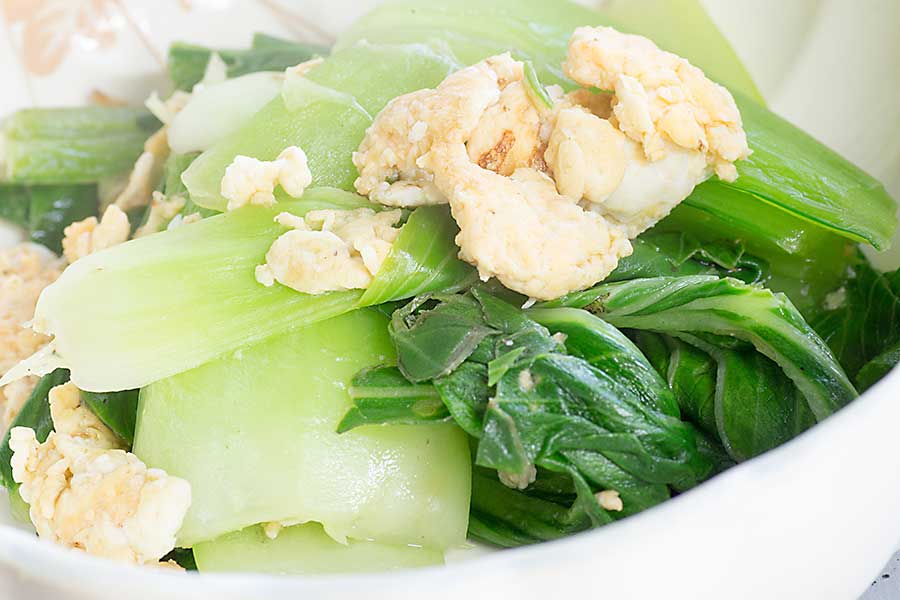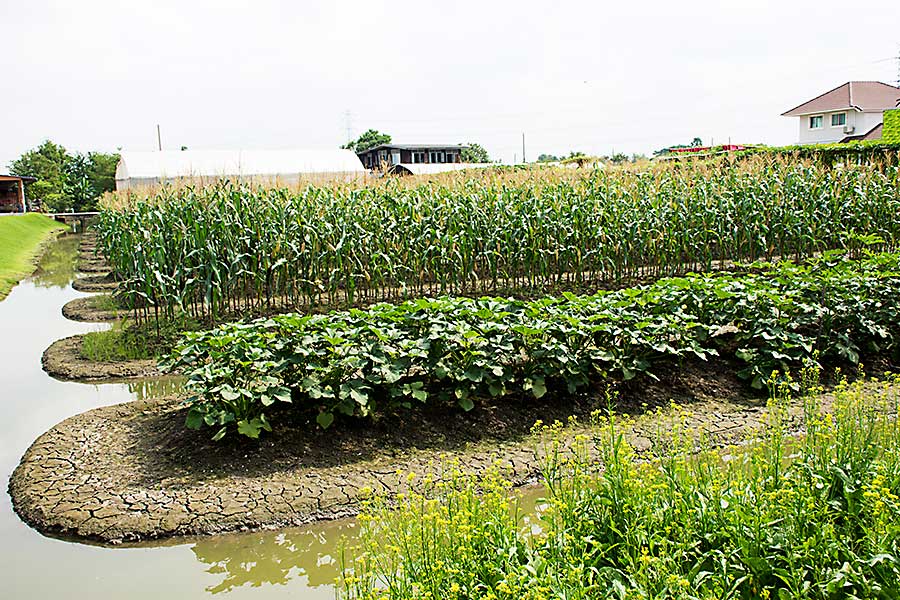Bok choi (Pak choi)
Bok choi is a type of Chinese cabbage. Also known as pak choi (pak choy), or white Chinese cabbage, the term bok choy translates literally to mean Shanghai Green.
The plant is a member of the brassicae or cruciferae families, also known as mustards, crucifers, or cabbages. Bok choi subspecies, konwn as Chinensis, do not form heads. Instead, they are known for a cluster of green leaves that look similar to mustard greens. These leaves are in a rosette shape, arranging with white and brittle stems into one neat longitudinal bunch. The petioles of the leaves are recognised as constituting the tastiest parts of pak choy.
Bok choy is extremely popular in Asian cuisine and can be prepared in many different ways. In Asian foods, you can find pak choy added to soups, cooked with seafoods and meat dishes, and rolled in spring rolls. Bok choy also pairs perfectly with vegetables and lends itself well to salads. Stir-fries are another popular method of cooking bok choy, retaining its flavour and crispiness.
Health benefits of pak choy
Pak choi is a good source of minerals, especially calcium, manganese and magnesium. Thanks to this, it affects the processes of proper blood clotting, cleanses the body of toxins and strengthens concentration. Interestingly, you can find ten exogenous amino acids in pak choi cabbage, ie those that the body cannot produce itself, and therefore we must provide them with food. Pak choi cabbage also has a small amount of omega-3 fatty acids, which are valuable for the whole body fatty acids.
How to buy bok choy
When looking for the best quality bok choy, keep an eye out for dark green leaves. The stalks of the plant should be white and rigid, although sometimes green stalks are found on some plants. Stems should be firm and not limp. Bok choy can last in the fridge for up to a week.
How to cook pak choy
The leaves and stem of pak choy contain two very different textures, with two different cooking times. The thin leaves at the top of the plant cook quickly and will usually bare a similar texture to spinach. The stalk is thicker, firmer, and crunchier, therefore taking longer to cook. A good way to avoid overcooking pak choy is to separate the leaves from the stems and cook the stalks first. Bok choy leaves need only a few seconds to wilt down and cook. You can choose to stir fry, blanch, or steam bok choy. All of these methods retain the refreshing flavour of the plant. Overcooking bok choy will lead to the stalks losing their firm crunch – a much loved texture that is enjoyed in many dishes.
Is pak choy toxic?
Bok choy contains glucosinolates, a compound that is known as a potential cancer preventative, but also as a toxin. The cancer preventing properties have been reported when consumed in low doses. Larger doses of bok choy can be toxic to humans, especially those who are seriously ill. In 2009, an elderly woman with diabetes was consuming between 1 and 1.5 kilograms of pak choy a day. She ended up developing a hypothyroid that resulted in myxoedema coma. Her treating physicians later released a study which found that eating raw bok choi releases an enzyme that inhibits uptake of iodine. This only happens when eating large amounts over extended periods of time.
Private Chefs, Art of Dining
CHEFIN is a private chef platform that’s reimagining social dining.
You can easily connect with 1 of our 250 private chefs and treat your guests to restaurant-quality dining experiences in the comfort of your own home, office or chosen venue. From high-end dining to quirky social food experiences, the CHEFIN platform makes it effortless for you to access gourmet food that’s worthy of a Michelin-starred establishment.
What you get:
-
- Your very own private chef who is vetted and insured,
- A customised menu for your needs,
- 24/7 concierge support,
- Complete post-dinner cleanup,
- A fun, stress-free, and unforgettably dining experience!


